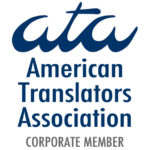While written Spanish is rife with diacritical marks (a.k.a. accent marks), there is none as sexy and symbolic as the eñe. Take for example, the commonly used word, año (year). Remove the eñe, and you’re left with ano, which is the Spanish word for anus. In most cases, leaving out the accent won’t result in possible embarrassment, but there is currently a movement which posits that the use of accents online is critical to maintaining the integrity and purity of written Spanish.
The movement was borne out of the initiative of the Real Academia Española, which finds that with the spread of Internet use, online communications should be held to the same standards as written Spanish. La Academia Argentina de Letras and the Instituto Cervantes also back the campaign.
To this end, Internet domains originating in Spain can now be registered with Spanish’s beloved and emblematic ñ. Internet addresses registered in Spain will thus be more descriptive and possibly less misleading. For example, if one wants to register an organization called Campaña Para los Derechos Humanos (Campaign for Human Rights), they can now do so and keep their Internet domain faithful to the organization’s name. Previously, they’d have to omit the ñ from the address, and would be left with the potentially confusing campanaparalosderechoshumanos.com, which means “The Bell of Human Rights.” In examples such as this, one sees how critical the correct use of ñ becomes, as campana means bell and campaña means campaign or movement.
You may wonder: why is using accent marks so critical? Realize that this is mostly an academic movement of language purists. They maintain that the integrity of correctly written Spanish must be kept across all forms of written Spanish, even in the often informal and fast-paced medium of the Internet. Furthermore, the Campaña Pro-Eñe reminds us that accents in Spanish are not extra flourishes that we can choose to use or leave out as we wish, but are in fact necessary components of a correctly spelled word.
If accent marks are so critical in written Spanish, why are they often left out? Some reasons for their omission are:
• Efficiency, as inserting accent marks takes an extra moment and extra key strokes.
• Keyboards not specifically set up for writing in Spanish often make it difficult to quickly insert accents.
• Use of increasingly informal written Spanish, especially in online communications.
• Lack of knowledge about which words include accent marks, even for those educated in Spanish.
• Inability to adapt the Internet as a primarily English-speaking medium to the written conventions of Spanish.
• The different educational levels of Internet users, as many do not have the educational background to feel at ease with accent usage.
The movement to encourage correct accent mark usage on the Internet serves to combat the abovementioned reasons. However, only time will tell if this movement has the support and general interest to win over regular Internet users as well as academics.



